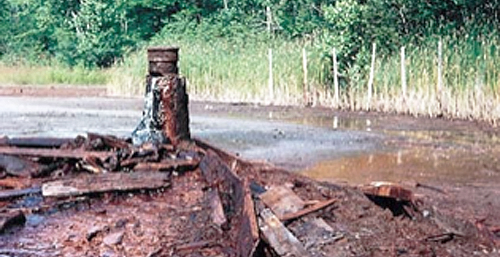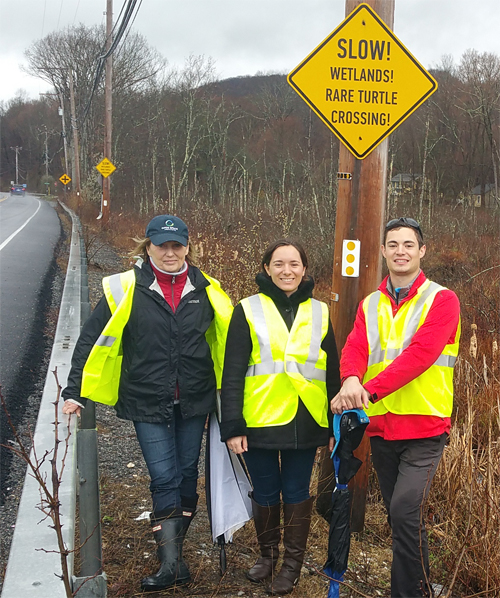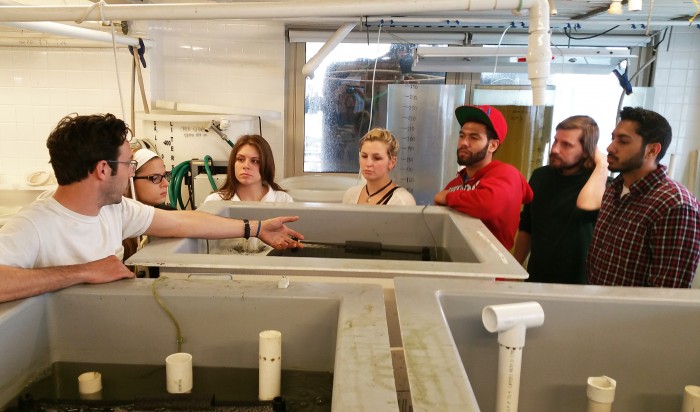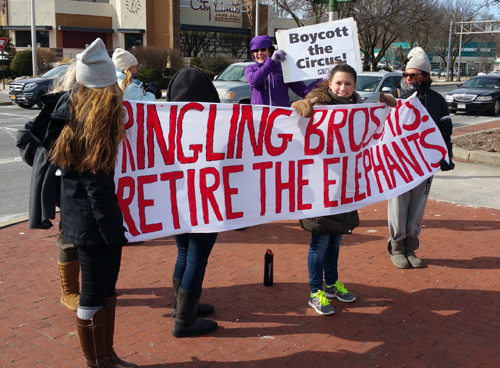Editor’s Note: Tom Wilber regularly contributes posts about shale gas and fracking to EarthDesk. This post also appears on his excellent blog Shale Gas Review. More on Tom follows. — John Cronin
The debate over natural gas development in New York has mostly been about the future. But residents living over New York’s abundant gas reserves must also figure out what to do about the past.
Regulators estimate there are 57,000 abandoned and orphan oil and gas wells statewide – many of them leaking. Of these, the state has listed 4,722 as a priority due to health and safety risks, but lacks funding to plug them. Wells tend to leak over time as casings deteriorate, raising risks of explosions and providing conduits for water contamination from methane, brine, arsenic and other pollution. The problem is summed up in this 2002 report from the New York Department of Environmental Conservation: “Abandoned wells can leak oil, gas and brine. They can contaminate groundwater and surface water, kill vegetation and cause safety and health problems. Underground leaks may go undetected for years before their damage is discovered.”
It’s a warning supported by facts in New York and neighboring shale gas states, where problems have ranged from drinking water pollution to fatal explosions. (More on that in a bit.) Unlike many industrial hazards, abandoned wells lurk in unexpected places. (Map here.) They have been found at playgrounds and parking lots, inside buildings, in wetlands, underwater in creeks and ponds, in wooded and brushy areas and in residential yards, according to DEC records. DEC staff discovers more of them every year during scheduled inspections or while investigating complaints. The most threatening cases go on the state’s priority list to be plugged “whenever funds become available.”
Since shale gas became a major political issue, “old oil fields” is something you rarely, if ever, hear state officials talk about.
So far, funds have not become available, even as the state considers plans to begin permitting new drilling on an unprecedented scale for operators targeting the Marcellus and Utica shales, extending under most of upstate New York.
The abandonment problem is rooted in the economics and regulation of gas production. As wells age and production declines, they become maintenance liabilities, which encourages their sale to whomever will buy them — typically smaller, less established firms or even homeowners. In the end, the parties left holding them often drop them from their books or go bankrupt.
Theodore Loukides, head of the Oil & Gas Compliance and Enforcement Section for the DEC, issued a bulletin earlier this year notifying operators that “given the state of awareness surrounding energy development, the plugging of legacy wells will likely remain a high-profile issue of years to come.” In the bulletin, published in a newsletter for the Independent Oil & Gas Association of New York, he asked operators for input on plugging, and new initiatives focusing on waste, bulk storage, spills, and proper submittal of annual reports.
Dealing with wells on New York’s priority list would cost between $24 million and $236 million.
DEC spokesman Peter Constantakes didn’t return calls or emails about the subject this week. Yet the “state of awareness” that Loukides delicately mentions is due to the contentious issue of whether Governor Andrew Cuomo will finalize permitting guidelines for high volume hydraulic fracturing necessary to explore and produce the Marcellus and Utica shales, which collectively run under a good part of upstate New York. Since shale gas became a major political issue in 2008, the legacy of “old oil fields” is something you rarely, if ever, hear DEC officials talk about publically, even though the problem has been neatly summarized in prior studies and annual reports.
The 1995 annual report for the Minerals Resources Division was explicit in this warning ,which was repeated verbatim almost a decade later in a 2003 report commissioned by the state Energy and Research Development Authority:
One of the biggest challenges facing the oil and gas regulatory program is the growing liability of idle and abandoned wells. In most cases financial security, even for operators in compliance with current regulations, does not provide sufficient funding to plug the covered wells. When operators default on their tax bills and counties foreclose on properties that contain unplugged wells, those wells become a liability for local taxpayers. This is not a hypothetical worst-case scenario, but reflect current events already happening in the counties. We need a creative approach to develop new solutions to this problem, and hope to productively work together with all stakeholders in this effort.
Fixing the problem will require significant regulatory reform, according to Ron Bishop, a professor of chemistry and bio chemistry at SUNY Oneonta who has been studying the orphan well issue in New York. In a white paper for a land preservation group called Sustainable Otsego, Bishop explains:
Unless the state of New York does something to dramatically alter the long-standing culture of neglect, we can reasonably expect oil and gas industry operators to ignore any new standards just as they systematically ignore existing standards today.
The problem extends from the pre-regulatory era to current times. It’s common practice for larger operators to sell off wells near the end of their life cycle to smaller firms with less capitol. The sale provides the seller with a better financial outcome than holding onto the dwindling returns and provides a buyer – typically one with limited capital — a well that it doesn’t have to drill. Bishop cites this explanation from Lou Allstadt, a former senior executive with Mobile Oil:
The original company uses the cash to finance new investments. The buying company operates with lower costs because they spend less on maintenance and safety items and they have fewer well-qualified people to pay. The chain may end there or continue through smaller and ever lower cost operators who do no preventive maintenance at all, do the bare minimum of repairs to keep the well going and eventually walk away, maybe after plugging the hole as cheaply as possible and maybe not plugging at all. The smaller companies often operate each well or group of wells under a separate corporate entity that is always stripped of cash, so if something goes wrong there are no assets to pay off claims. Not all small operators will do this, but it happens.
Shale gas wells are more prone to this outcome than yesterday’s conventional wells because production from shale, known as tight gas, tends to taper more quickly than conventional wells, according to Bishop.
Now for more on the legacy of problems in New York and Pennsylvania: A starting point is in 2008. The first wave of aggressive shale gas prospecting in New York raised many questions with residents, and DEC staffers staged informational meetings at town halls throughout the Southern Tier to address them. Officials from the Minerals Resources Division pitched shale gas as a clean, problem free and well-regulated industry. They avoided mention of the tens of thousands of orphan wells that in fact represented a serious, chronic, and concrete problem.
Around this time Walter Hang, an environmental researcher, began uncovering a history of neglect that undermined the DEC’s message and sowed early seeds of public doubt about the transparency of both the industry and those who oversee it. Hang is president of Toxics Targeting, a firm that identifies and tracks pollution liabilities for developers and municipalities.
Hang and others who tried to quantify and characterize the problem had tough going, due to a records system that was decentralized, archaic, and often incomplete with files scattered among disparate government offices, private companies, and court rooms. Still, Hang culled 270 records documenting mishaps —some from newspaper clippings, dossiers at health departments, complaints filed with elected officials, and some showing up on the DEC’s database for spills. Many of the problems — including fires, blow-outs, methane migration, and spills relating to wells or infrastructure –- remained unresolved and partially documented.
Hang’s analysis, which I wrote about in a series of reports for the Press & Sun-Bulletin and later inUnder the Surface, drew sharp criticism from industry and regulators who dismissed it as overblown. A few hundred cases, they said, represents a negligible proportion of the tens of thousands of wells drilled through New York’s history. Still, the cases were troubling then and they are troubling now, mostly because they represent a subset of a greater number of problems that will remain unknown without a reliable and comprehensive system to document them.
In matters of transparency, the oil and gas industry operates mostly on its own terms. It works on private land under contract with landowners. Chemicals pumped into wells are exempt from theSafe Drinking Water Act, and waste that comes out is exempt from federal hazardous waste laws. The absence of a federal regulatory baseline in these two critical areas leaves a lot of grey area.
And it gets greyer. The DEC, like other states, adopts a laissez-faire approach to much of its oversight. Agency’s are understaffed and rely primarily on paperwork submitted by operators. Complaints involving water contamination are often settled privately between leaseholder and drillers, and they often end with non-disclosure agreements that eliminate any public paper trail.
William T. Boria, a water resources specialist at the Chautauqua County Health Department, was frustrated by this very approach. He reported his agency had received more than 140 complaints related to water pollution or gas migration associated with nearby drilling operations. “Those complaints that were recorded are probably just a fraction of the actual problems that occurred,” he stated in a 2004 memo summarizing the issue. For fifty-three of those cases filed from 1983 to 2008, county health officials tabulated an informational spreadsheet that cited methane migration, brine pollution, and at least one home evacuation resulting from a water well explosion. “A representative I spoke with from the Division of Minerals [of the DEC] insists that the potential for drinking water contamination by oil and gas drilling is almost nonexistent,” Boria wrote in his memo to a party whose name was redacted. “However, this department has investigated numerous complaints of potential contamination problems resulting from oil and gas drilling.”
The problem is worse in Pennsylvania, where 200,000 or more abandoned wells are more or less hidden under the landscape. In September, 2009, the DEP compiled a draft of known cases where methane leaked from abandoned or working wells. According to the briefing, methane migration from gas drilling, had “caused or contributed to” at least six explosions that killed four people and injured three others over the course of the decade preceding full-scale Marcellus development. The threat of explosions had forced 20 families from their homes, sometimes for months. At least 25 other families have had to deal with the shut-off of utility service or the installation of venting systems in their homes. At least 60 water wells (including three municipal supplies) had been contaminated.
What does this mean for the future? It’s hard to know where to start, but focusing on the cost of the problem is a good place. Plugging a single well can cost between $5,000 and $50,000, according to estimates from the DEC. That means the bill for dealing with wells on New York’s priority list alone would cost between $24 million and $236 million. In economic terms, this cost is “externalized,” which means that it is not borne by businesses or their consumer. Rather, it’s falls to taxpayers, or comes at the expense of public health and safety.
In many ways the orphan well legacy is similar to the abandoned mine legacy that continues to foul water and create public hazards in Pennsylvania and other states, and it’s a manifestation of an important aspect of the extraction industry overall. Coal, natural gas, and oil provide modern-day comforts beyond historical comparison. As energy consumers, we should embrace a moral obligation to understand where our energy comes from and at what cost as we evaluate tradeoffs.
«« »»
 Tom Wilber’s Under the Surface, Fracking Fortunes and the Fate of the Marcellus Shale (Cornell University Press) was recently selected as a finalist in the 2013 New York Public Library’s Helen Bernstein Book Award for Excellence in Journalism. His career as a journalist encompasses more than 20 years in the newspaper business, including 17 years with the Binghamton Press & Sun-Bulletin, covering business, health, and environment beats. He has reported on shale gas development in New York and Pennsylvania since 2008.
Tom Wilber’s Under the Surface, Fracking Fortunes and the Fate of the Marcellus Shale (Cornell University Press) was recently selected as a finalist in the 2013 New York Public Library’s Helen Bernstein Book Award for Excellence in Journalism. His career as a journalist encompasses more than 20 years in the newspaper business, including 17 years with the Binghamton Press & Sun-Bulletin, covering business, health, and environment beats. He has reported on shale gas development in New York and Pennsylvania since 2008.
Tom was among the first reporters to provide daily coverage of events in Dimock Pennsylvania, which have since become iconic of the national controversy over fracking. For that, he won top honors in Best of Gannett beat reporting in 2010. He left the newspaper in 2010 to write full time about shale gas development. He now tracks current events related to shale as development in his blog, Shale Gas Review. He has taught various journalism courses as an adjunct at Binghamton University.











Trackbacks/Pingbacks